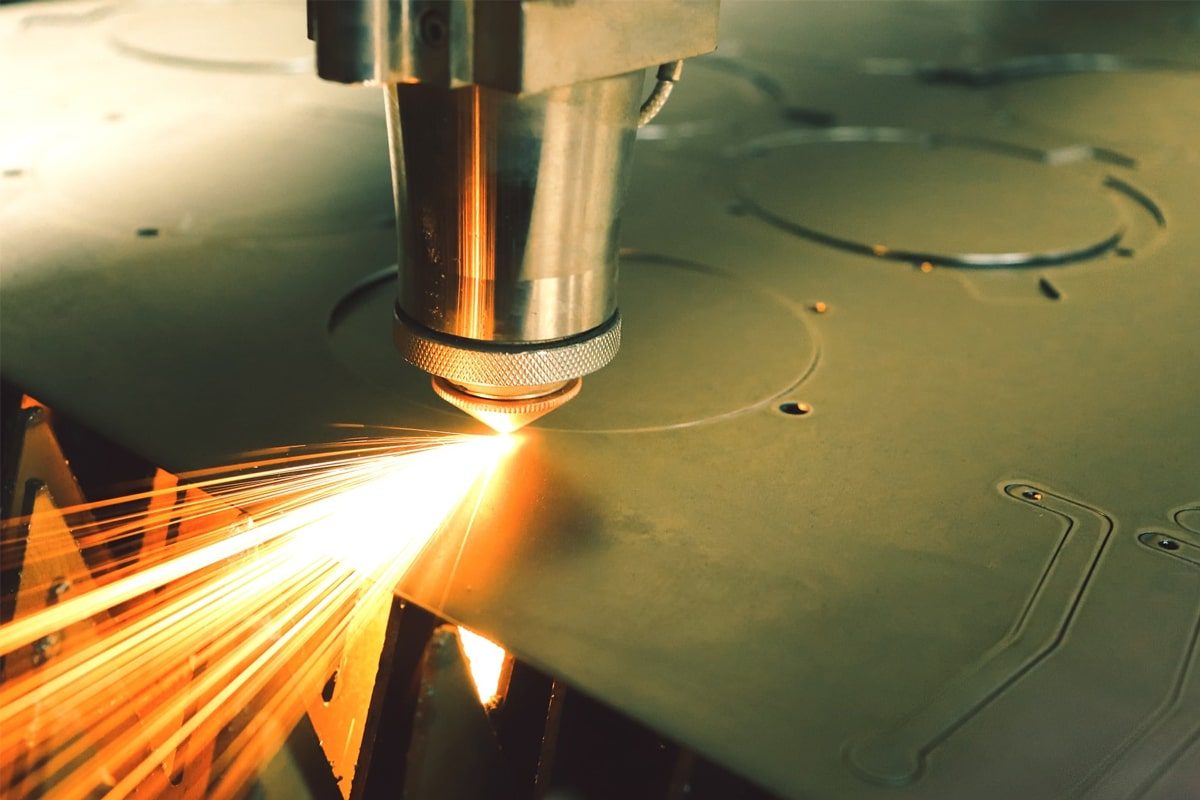
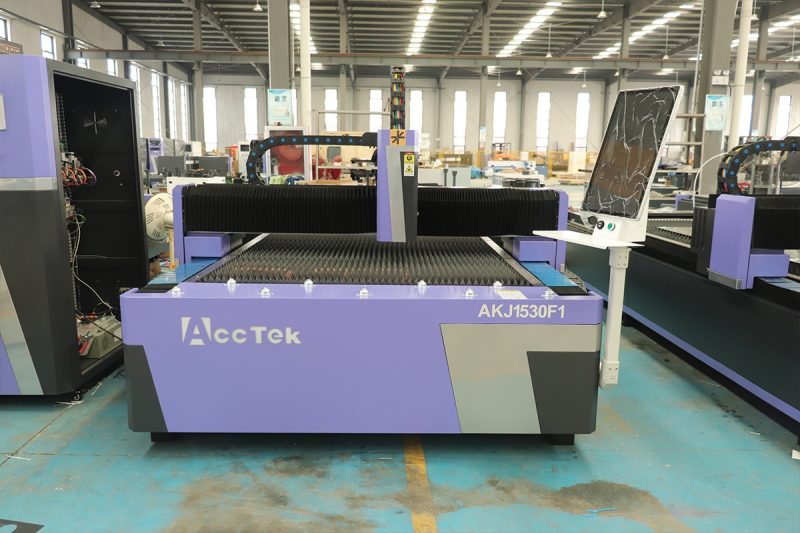
What is Fiber Laser Cutting?
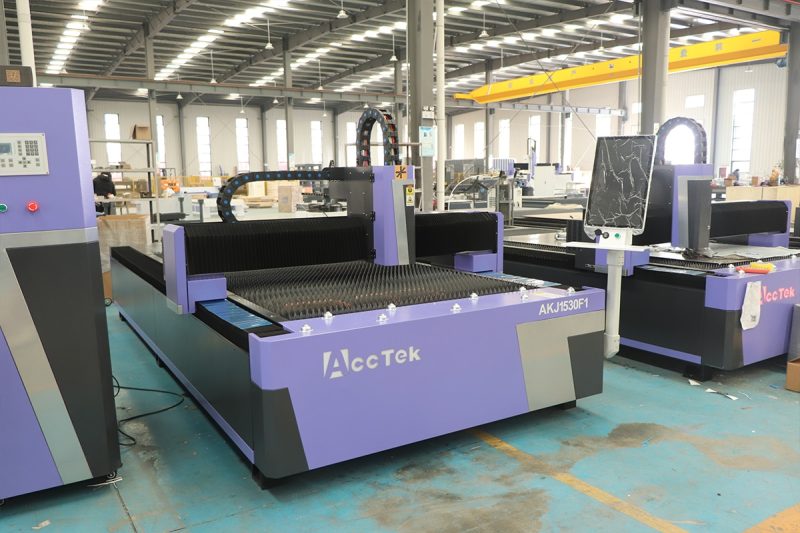
Advantages of Fiber Laser Cutting Machines
High Efficiency and Energy Savings
Superior Cutting Speed and Productivity
Exceptional Precision and Quality
Versatility in Material Processing
Low Maintenance Requirements
Compact and Space-Saving Design
Long Service Life and Reliability
Environmental Benefits
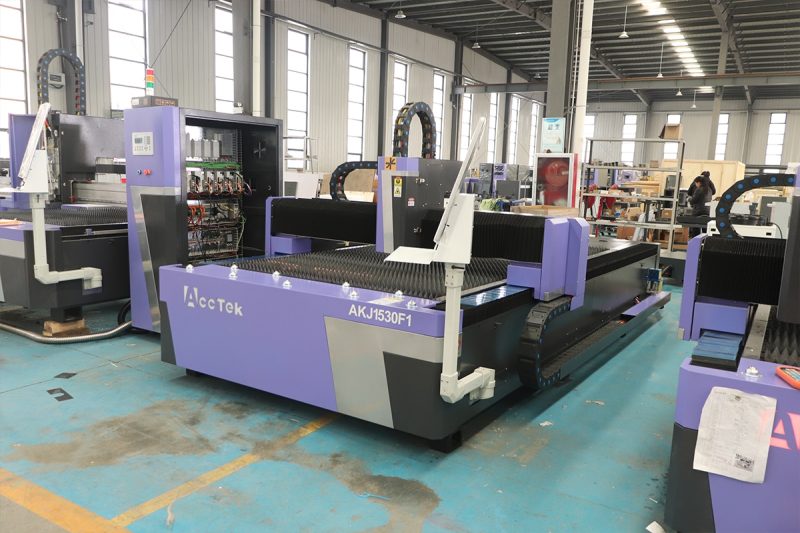
Disadvantages of Fiber Laser Cutting Machines
High Initial Investment Cost
Limitations on Material Thickness
Challenges with Non-Metal Materials
Potential for Back-Reflection Damage
Complexity of Technology
Higher Repair Costs
Technical Expertise Required
Safety Considerations
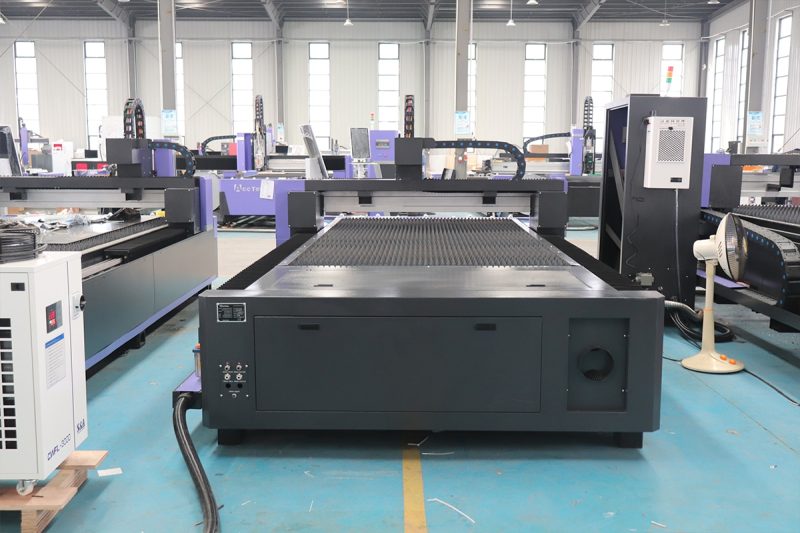
Applications of Fiber Laser Cutting Machines
Industrial Manufacturing
Fiber lasers play a critical role in industrial manufacturing, where high precision and efficiency are essential.
- Automotive Industry: These machines are used to cut complex body panels, structural components, and exhaust systems with minimal heat distortion.
- Aerospace Industry: Fiber lasers create lightweight components from materials like titanium and aluminum, maintaining the strength-to-weight ratio critical for aerospace applications.
- Electronics Industry: The ability to cut intricate patterns makes fiber lasers ideal for manufacturing small components like battery tabs and circuit boards, ensuring high precision and consistency.
Metal Fabrication
Metal fabrication is one of the primary sectors that benefit from fiber laser cutting technology. These machines are capable of cutting various metals, including carbon steel, stainless steel, aluminum, brass, and copper, with exceptional precision and edge quality.
- Architectural Metalwork: Fiber lasers are used to produce decorative elements, railings, and metal facades with intricate designs.
- Machinery Parts: The technology allows for the creation of highly accurate custom components for machinery and industrial equipment.
- Custom Fabrication: Metal fabricators use fiber lasers to produce small-batch parts and prototypes with rapid turnaround times.
Jewelry Making
The ability to create intricate and delicate designs makes fiber lasers an ideal choice for the jewelry industry.
- Engraving and Cutting: Fiber lasers are used to cut and engrave metals such as gold, silver, and platinum with minimal material loss.
- Customization: Jewelry makers can easily produce personalized items, such as rings, necklaces, and watches, with high precision and attention to detail.
- Minimal Post-Processing: The smooth and accurate cuts provided by fiber lasers reduce the need for additional finishing, streamlining production.
Medical Devices
Fiber laser cutting machines are widely used in the medical industry, where precision and cleanliness are paramount.
- Surgical Instruments: Fiber lasers are used to produce surgical tools with high precision, ensuring they meet the strict dimensional and safety standards required in healthcare.
- Implants and Prosthetics: The technology enables the production of custom implants and prosthetic components from biocompatible metals like titanium and stainless steel.
- Stents and Catheters: Fiber lasers create intricate patterns on stents and cut complex shapes for medical devices with minimal heat distortion, ensuring the structural integrity of the materials.
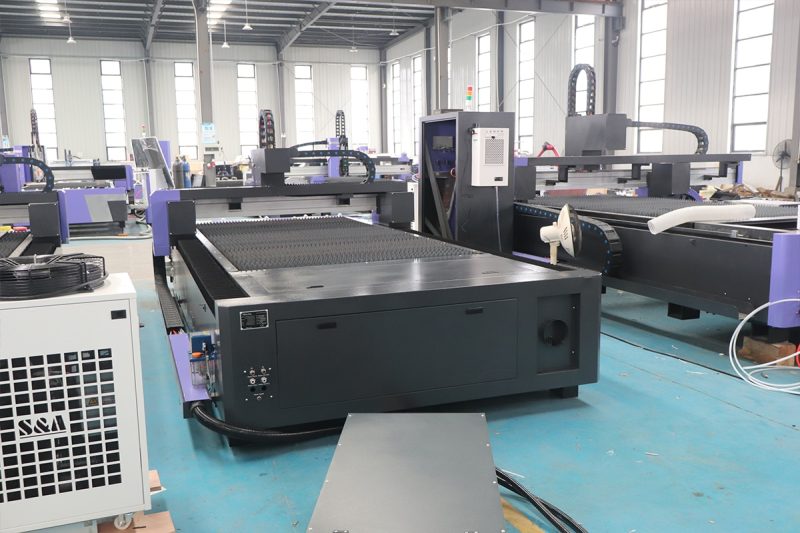
Considerations When Choosing a Fiber Laser Cutting Machine
Application Requirements
The first step is to identify the specific needs of your business and the types of materials you plan to cut.
- Material Type and Thickness: Ensure the machine’s power can handle the metals you frequently process, such as stainless steel, carbon steel, aluminum, or copper.
- Cutting Speed and Precision: If your business requires intricate designs or high-precision cuts, look for a machine with excellent beam quality and accuracy.
- Production Volume: For businesses with high production demands, machines with automated features such as dual worktables or robotic loading systems can enhance productivity.
Cost-Benefit Analysis
Fiber laser cutting machines involve a significant initial investment, so it’s essential to weigh the costs against the potential benefits.
- Upfront Cost vs. Long-Term Savings: Although fiber lasers are more expensive than CO₂ or plasma cutters, they offer lower operational and maintenance costs over time.
- Return on Investment (ROI): Evaluate how quickly the machine will pay for itself through increased productivity, energy savings, and reduced downtime.
- Energy Efficiency and Operational Costs: Machines with high electrical efficiency contribute to lower energy bills, improving profitability in the long run.
Manufacturer Support and Service
Selecting a reliable manufacturer with robust technical support is essential for maintaining smooth operations.
- Installation and Training: Look for manufacturers, that provide comprehensive installation and operator training to maximize the machine’s capabilities.
- Technical Support and Maintenance Services: Access to prompt technical assistance minimizes downtime and ensures issues are resolved quickly.
- Availability of Spare Parts: Reliable manufacturers ensure easy access to spare parts and consumables, reducing repair times and maintaining production efficiency.
Future Scalability
Investing in a fiber laser cutting machine that accommodates future growth ensures long-term operational efficiency.
- Power Upgrade Options: Some machines allow for power upgrades to meet evolving production needs, enabling businesses to cut thicker or more reflective materials as demand increases.
- Modular Components: Machines with modular designs can be customized with additional features, such as automation systems or rotary axes, to handle new applications.
- Software Integration: Ensure the machine supports advanced software for production monitoring, automation, and optimization, helping businesses stay competitive in the long term.
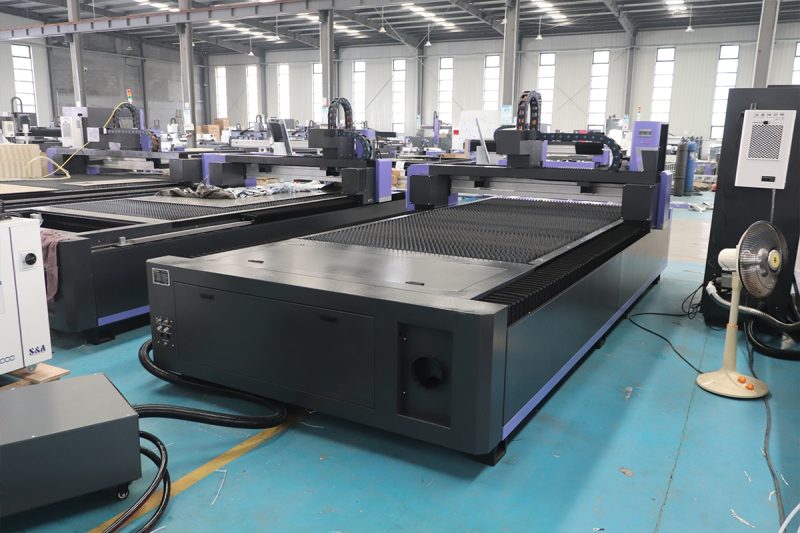
Safety Considerations in Fiber Laser Cutting
Laser Radiation
Fiber lasers emit high-intensity beams at wavelengths around 1.06 micrometers, which can be hazardous to human tissue, especially the eyes and skin.
- Eye Protection: Direct or reflected laser beams can cause severe eye injuries, potentially leading to vision loss. Operators should wear appropriate laser safety goggles with the correct optical density for the specific wavelength.
- Laser Enclosures: Machines equipped with fully enclosed cutting areas help prevent accidental exposure to laser radiation. Additionally, interlock systems stop the laser if the enclosure is opened during operation.
- Warning Systems: Visible warning lights and signage around the machine area help inform personnel of active laser operations, reducing the risk of accidental exposure.
Fume and Dust Extraction
Fiber laser cutting machines generate fumes, dust, and particulates, particularly when cutting metals like stainless steel and aluminum. Inhaling these fumes can pose health risks, including respiratory issues.
- Fume Extractors: Installing high-quality fume extraction systems ensures the removal of harmful fumes and particles from the workspace, maintaining air quality.
- Air Filtration Systems: Some machines feature integrated air filtration to capture fine particulates, preventing them from circulating in the environment.
- Ventilation: Proper ventilation in the workspace further supports air circulation and reduces the concentration of hazardous fumes.
Electrical Safety
Fiber laser cutting machines require high-power electrical systems to operate, posing risks such as electric shock or equipment malfunction.
- Proper Grounding: Ensuring the machine is correctly grounded minimizes the risk of electric shocks.
- Routine Electrical Inspections: Regular inspection and maintenance of electrical components help detect potential issues such as worn cables or loose connections.
- Operator Training: Only trained personnel should handle electrical systems to avoid accidental injuries or damage to the equipment.
Fire Hazards
Fiber lasers generate significant heat, and the sparks created during metal cutting can ignite flammable materials in the work area.
- Fire Prevention Systems: Machines equipped with fire detection systems and automatic extinguishing units offer quick responses to potential fires.
- Clear Workspaces: Keep the area around the laser cutting machine free of flammable objects such as paper, wood, or textiles.
- Fire Extinguishers: Ensure that appropriate fire extinguishers, such as those rated for electrical and metal fires, are easily accessible.
- Emergency Stop Buttons: Machines should be equipped with emergency stop buttons, allowing operators to quickly shut down the system in case of fire or other hazards.
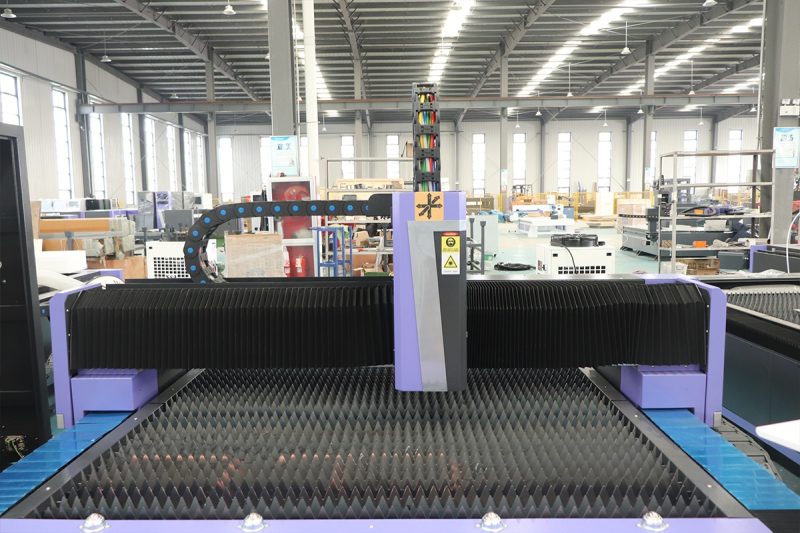
Cost Analysis Over the Machine's Lifespan
Initial Investment
The initial purchase of a fiber laser cutting machine represents a significant capital expense.
- Machine Cost: Fiber laser cutting machines can range from $15,000 to over $300,000, depending on the power, size, and features. Advanced machines with automation, high power, or dual worktables can cost even more.
- Installation and Setup: Additional expenses may include site preparation, shipping, installation, and commissioning services.
- Training Costs: Businesses must invest in operator training to ensure proper machine handling, adding to the initial outlay.
Operating Costs
Operational expenses cover energy consumption, consumables, and labor.
- Energy Consumption: Fiber lasers are more energy-efficient than CO2 lasers, consuming less electricity, which reduces utility bills. A typical fiber laser has an electrical efficiency of over 30%, making it cost-effective in energy-intensive operations.
- Consumables: Although fiber lasers require fewer consumables, items like cutting nozzles, protective lenses, and assist gases (such as nitrogen or oxygen) still need regular replenishment.
- Labor Costs: Automation features reduce the need for manual labor, although trained operators are still required to supervise and maintain the machine.
Maintenance and Repairs
While fiber laser cutting machines are known for their low maintenance requirements, businesses must still budget for routine upkeep and occasional repairs.
- Scheduled Maintenance: Regular cleaning, part replacements (such as lenses and nozzles), and software updates help maintain peak performance.
- Repair Costs: When repairs are needed, they can be expensive due to the high cost of specialized components, such as the laser source or control boards.
- Minimized Downtime: Access to reliable manufacturer support, helps businesses minimize downtime and keep repair costs manageable.
Productivity Gains
The high speed, precision, and efficiency of fiber laser cutting machines translate into significant productivity improvements.
- Faster Cutting Speeds: Increased throughput allows businesses to handle more orders in less time, maximizing revenue potential.
- Reduced Waste: The precision of fiber lasers minimizes material waste, lowering production costs and enhancing profitability.
- Improved Quality: The smooth, accurate cuts reduce the need for post-processing, saving time and labor.
Return on Investment (ROI)
The ROI for a fiber laser cutting machine depends on how well the business balances the initial costs with operational efficiency and productivity gains.
- Faster Payback Period: Businesses with high production volumes and frequent use of the machine typically see a faster ROI.
- Cost Savings Over Time: Lower energy consumption, reduced maintenance needs, and minimal downtime contribute to long-term savings.
- Enhanced Market Competitiveness: By leveraging the machine’s capabilities, businesses can improve product quality and expand their customer base, further accelerating ROI.
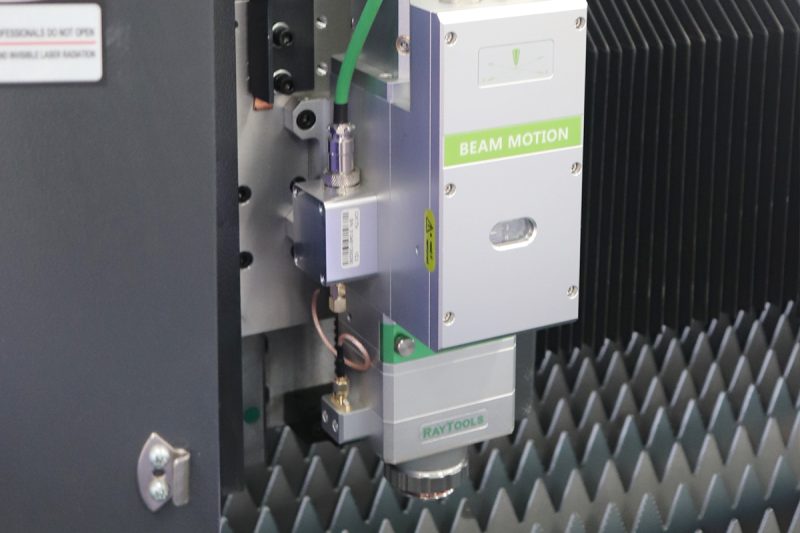
Summary
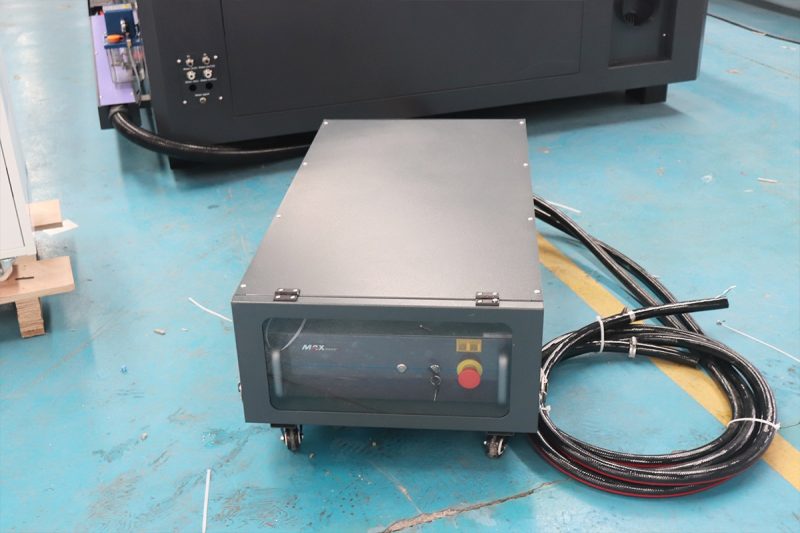
Get Laser Cutting Solutions
- [email protected]
- [email protected]
- +86-19963414011
- No. 3 Zone A, Lunzhen Industrial Zone,Yucheng City , Shandong Province.
